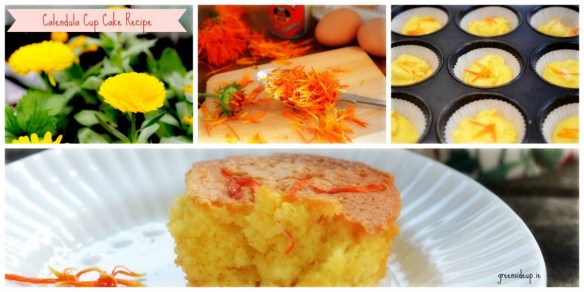 Today I was showing the autumn group of community gardeners at Freshford one of my favourite flowers in the vegetable garden, Calendula officinalis. Arguably one of the best companion plants around, Calendula, more commonly known as Pot Marigold, has an uplifting range of colours on the yellow to orange scale, continuously flowers throughout the summer months and has the ability to attract slugs as well as white and blackfly. This unfortunate trait makes it a handy sacrificial plant, or an indicator that there’s a problem pest in the garden but to be honest, apart from one white fly incident in a polytunnel, that’s not something I’ve really noticed in the years I’ve grown it.
Today I was showing the autumn group of community gardeners at Freshford one of my favourite flowers in the vegetable garden, Calendula officinalis. Arguably one of the best companion plants around, Calendula, more commonly known as Pot Marigold, has an uplifting range of colours on the yellow to orange scale, continuously flowers throughout the summer months and has the ability to attract slugs as well as white and blackfly. This unfortunate trait makes it a handy sacrificial plant, or an indicator that there’s a problem pest in the garden but to be honest, apart from one white fly incident in a polytunnel, that’s not something I’ve really noticed in the years I’ve grown it.
 Calendula will always find a way into gardens I work with for its ability to attract pollinators, its vibrancy, and knowing that if I look at it often enough, one day I’ll finally get around to making the soft, healing hand and body lotions that Calendula is often associated with.
Calendula will always find a way into gardens I work with for its ability to attract pollinators, its vibrancy, and knowing that if I look at it often enough, one day I’ll finally get around to making the soft, healing hand and body lotions that Calendula is often associated with.

Calendula Seed Head – ready to harvest
At this time of year you might notice the petals falling off the plants and the seeds beginning to show themselves. As we’ve had such a dry spell recently, the seeds are setting naturally on the plants without rotting, something that often occurs during wet autumn days. The seeds can be gently removed and placed in brown envelopes, ready to sow again either in the springtime or undercover now for early flowering next year.
For centuries however, Calendula officinalis has been used medicinally in cultures around the world. According to Jekka McVicar’s Complete Herb Book, the inspiration behind the cupcake recipe below, there are some wonderful and ancient stories surrounding this herb. Among other tales, wreaths of Calendula were used to crown the gods and goddesses, the flowers added as an ingredient in love potions in medieval times and the leaves used in the American Civil War by doctors rushing around the battlefields treating open wounds.
For now however, I’ve been wearing a domestic hat and made the buns using the following recipe:
 Calendula Cup Cake Recipe
Calendula Cup Cake Recipe
Makes 16
100g softened butter
100g caster sugar
2 eggs
100g self-raising flour
2 tablespoons milk
2 tbls fresh Calendula petals
Preheat oven to 200ºC/gas mark 6
Put the butter, caster sugar, eggs and flower into a bowl or food processor and mix together until fully combined. Add the milk gradually (pulse if using a processor). Fold in 1½ tablespoons of the petals then spoon the mixture into paper bun cases. Sprinkle the remaining petals onto the top of each bun mixture and add a small sprinkling of sugar on top. Place the tray in the oven and bake for 15 – 20 minutes. Remove the tray from the oven and place the buns on a wire tray to cool.
 This is a handy little cupcake recipe regardless whether you add the petals or not. The buns are light and fluffy and given the history of calendula, with each small bite I felt like I was connecting with our past, and of course, they must be good for us if they contain a medicinal herb 😉
This is a handy little cupcake recipe regardless whether you add the petals or not. The buns are light and fluffy and given the history of calendula, with each small bite I felt like I was connecting with our past, and of course, they must be good for us if they contain a medicinal herb 😉
Are you a Calendula fan? Have you noticed it’s abilities as a companion plant or used it medicinally or in the kitchen?







1 Comment
[…] Calendula Cupcakes – Greenside Up […]